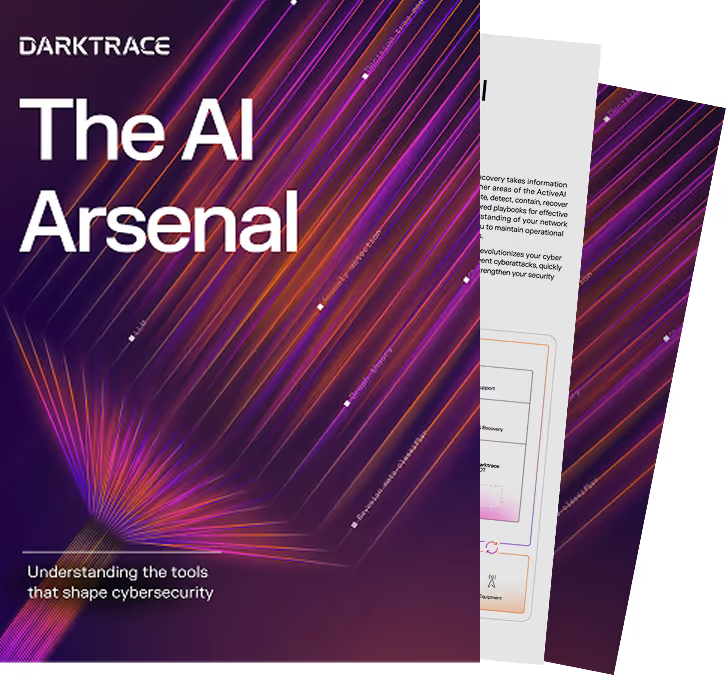AI is everywhere, predominantly because it has changed the way humans interact with data. AI is a powerful tool for data analytics, predictions, and recommendations, but accuracy, safety, and security are paramount for operationalization.
In cybersecurity, AI-powered solutions are becoming increasingly necessary to keep up with modern business complexity and this new age of cyber-threat, marked by attacker innovation, use of AI, speed, and scale. The emergence of these new threats calls for a varied and layered approach in AI security technology to anticipate asymmetric threats.
While many cybersecurity vendors are adding AI to their products, they are not always communicating the capabilities or data used clearly. This is especially the case with Large Language Models (LLMs). Many products are adding interactive and generative capabilities which do not necessarily increase the efficacy of detection and response but rather are aligned with enhancing the analyst and security team experience and data retrieval.
Consequently, many people erroneously conflate generative AI with other types of AI. Similarly, only 31% of security professionals report that they are “very familiar” with supervised machine learning, the type of AI most often applied in today’s cybersecurity solutions to identify threats using attack artifacts and facilitate automated responses. This confusion around AI and its capabilities can result in suboptimal cybersecurity measures, overfitting, inaccuracies due to ineffective methods/data, inefficient use of resources, and heightened exposure to advanced cyber threats.
Vendors must cut through the AI market and demystify the technology in their products for safe, secure, and accurate adoption. To that end, let’s discuss common AI techniques in cybersecurity as well as how Darktrace applies them.
Modernizing cybersecurity with AI
Machine learning has presented a significant opportunity to the cybersecurity industry, and many vendors have been using it for years. Despite the high potential benefit of applying machine learning to cybersecurity, not every AI tool or machine learning model is equally effective due to its technique, application, and data it was trained on.
Supervised machine learning and cybersecurity
Supervised machine models are trained on labeled, structured data to facilitate automation of a human-led trained tasks. Some cybersecurity vendors have been experimenting with supervised machine learning for years, with most automating threat detection based on reported attack data using big data science, shared cyber-threat intelligence, known or reported attack behavior, and classifiers.
In the last several years, however, more vendors have expanded into the behavior analytics and anomaly detection side. In many applications, this method separates the learning, when the behavioral profile is created (baselining), from the subsequent anomaly detection. As such, it does not learn continuously and requires periodic updating and re-training to try to stay up to date with dynamic business operations and new attack techniques. Unfortunately, this opens the door for a high rate of daily false positives and false negatives.
Unsupervised machine learning and cybersecurity
Unlike supervised approaches, unsupervised machine learning does not require labeled training data or human-led training. Instead, it independently analyzes data to detect compelling patterns without relying on knowledge of past threats. This removes the dependency of human input or involvement to guide learning.
However, it is constrained by input parameters, requiring a thoughtful consideration of technique and feature selection to ensure the accuracy of the outputs. Additionally, while it can discover patterns in data as they are anomaly-focused, some of those patterns may be irrelevant and distracting.
When using models for behavior analytics and anomaly detection, the outputs come in the form of anomalies rather than classified threats, requiring additional modeling for threat behavior context and prioritization. Anomaly detection performed in isolation can render resource-wasting false positives.
LLMs and cybersecurity
LLMs are a major aspect of mainstream generative AI, and they can be used in both supervised and unsupervised ways. They are pre-trained on massive volumes of data and can be applied to human language, machine language, and more.
With the recent explosion of LLMs in the market, many vendors are rushing to add generative AI to their products, using it for chatbots, Retrieval-Augmented Generation (RAG) systems, agents, and embeddings. Generative AI in cybersecurity can optimize data retrieval for defenders, summarize reporting, or emulate sophisticated phishing attacks for preventative security.
But, since this is semantic analysis, LLMs can struggle with the reasoning necessary for security analysis and detection consistently. If not applied responsibly, generative AI can cause confusion by “hallucinating,” meaning referencing invented data, without additional post-processing to decrease the impact or by providing conflicting responses due to confirmation bias in the prompts written by different security team members.
Combining techniques in a multi-layered AI approach
Each type of machine learning technique has its own set of strengths and weaknesses, so a multi-layered, multi-method approach is ideal to enhance functionality while overcoming the shortcomings of any one method.
Darktrace’s Self-Learning AI is a multi-layered engine is powered by multiple machine learning approaches, which operate in combination for cyber defense. This allows Darktrace to protect the entire digital estates of the organizations it secures, including corporate networks, cloud computing services, SaaS applications, IoT, Industrial Control Systems (ICS), and email systems.
Plugged into the organization’s infrastructure and services, our AI engine ingests and analyzes the raw data and its interactions within the environment and forms an understanding of the normal behavior, right down to the granular details of specific users and devices. The system continually revises its understanding about what is normal based on evolving evidence, continuously learning as opposed to baselining techniques.
This dynamic understanding of normal partnered with dozens of anomaly detection models means that the AI engine can identify, with a high degree of precision, events or behaviors that are both anomalous and unlikely to be benign. Understanding anomalies through the lens of many models as well as autonomously fine-tuning the models’ performances gives us a higher understanding and confidence in anomaly detection.
The next layer provides event correlation and threat behavior context to understand the risk level of an anomalous event(s). Every anomalous event is investigated by Cyber AI Analyst that uses a combination of unsupervised machine learning models to analyze logs with supervised machine learning trained on how to investigate. This provides anomaly and risk context along with investigation outcomes with explainability.
The ability to identify activity that represents the first footprints of an attacker, without any prior knowledge or intelligence, lies at the heart of the AI system’s efficacy in keeping pace with threat actor innovations and changes in tactics and techniques. It helps the human team detect subtle indicators that can be hard to spot amid the immense noise of legitimate, day-to-day digital interactions. This enables advanced threat detection with full domain visibility.
Digging deeper into AI: Mapping specific machine learning techniques to cybersecurity functions
Visibility and control are vital for the practical adoption of AI solutions, as it builds trust between human security teams and their AI tools. That is why we want to share some specific applications of AI across our solutions, moving beyond hype and buzzwords to provide grounded, technical explanations.
Darktrace’s technology helps security teams cover every stage of the incident lifecycle with a range of comprehensive analysis and autonomous investigation and response capabilities.
- Behavioral prediction: Our AI understands your unique organization by learning normal patterns of life. It accomplishes this with multiple clustering algorithms, anomaly detection models, Bayesian meta-classifier for autonomous fine-tuning, graph theory, and more.
- Real-time threat detection: With a true understanding of normal, our AI engine connects anomalous events to risky behavior using probabilistic models.
- Investigation: Darktrace performs in-depth analysis and investigation of anomalies, in particular automating Level 1 of a SOC team and augmenting the rest of the SOC team through prioritization for human-led investigations. Some of these methods include supervised and unsupervised machine learning models, semantic analysis models, and graph theory.
- Response: Darktrace calculates the proportional action to take in order to neutralize in-progress attacks at machine speed. As a result, organizations are protected 24/7, even when the human team is out of the office. Through understanding the normal pattern of life of an asset or peer group, the autonomous response engine can isolate the anomalous/risky behavior and surgically block. The autonomous response engine also has the capability to enforce the peer group’s pattern of life when rare and risky behavior continues.
- Customizable model editor: This layer of customizable logic models tailors our AI’s processing to give security teams more visibility as well as the opportunity to adapt outputs, therefore increasing explainability, interpretability, control, and the ability to modify the operationalization of the AI output with auditing.
See the complete AI architecture in the paper “The AI Arsenal: Understanding the Tools Shaping Cybersecurity.”

Machine learning is the fundamental ally in cyber defense
Traditional security methods, even those that use a small subset of machine learning, are no longer sufficient, as these tools can neither keep up with all possible attack vectors nor respond fast enough to the variety of machine-speed attacks, given their complexity compared to known and expected patterns.
Security teams require advanced detection capabilities, using multiple machine learning techniques to understand the environment, filter the noise, and take action where threats are identified.
Darktrace’s Self-Learning AI comes together to achieve behavioral prediction, real-time threat detection and response, and incident investigation, all while empowering your security team with visibility and control.
Learn how AI is Applied in Cybersecurity
Discover specifically how Darktrace applies different types of AI to improve cybersecurity efficacy and operations in this technical paper.































.jpg)




.avif)







